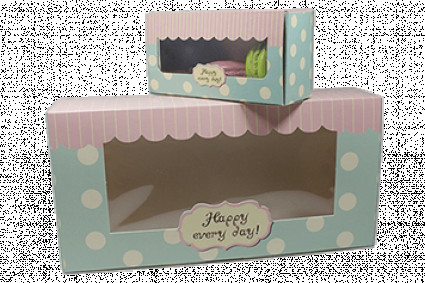
No one likes moving. It’s one thing everyone would love to be able to avoid in their lives, but it’s not always possible. Moving homes is a tedious process, moving across town is a compilation on its own. But imagine moving across the country! A whole other beast.
It’s without doubt the most difficult type of moving. But it’s not impossible. It might be a long and tedious process and a process that requires a lot of planning, preparation, coordination, and scheduling - but it can be pulled off.
Here are the tips and the ultimate checklist for moving cross-country.
Plan, plan, plan
Planning, a lot of careful planning is the only way to pull such a difficult move off. So, the moment you know the move will happen soon, start planning. Plan everything, every single detail because that will help you prepare better for the whole stress of moving across the country.
Of course, it goes without saying, that not all the plans will turn out the way you want, but at least you’ll know you did your best. You can start the planning process by creating a checklist of everything you want to accomplish. The list may get overwhelming, but at least you’ll have the whole list of pre-moving chores so you don’t forget anything.
Hire movers
For example, the first thing on your move list should be researching and hiring movers. If you are tempted to try to pull off the move yourself, just forget that idea, because the costs of moving your entire household across the country yourself are impossible and expensive.
So, researching the movers is the right way to go. Call different moving companies, and get quotes and schedules. Once you figure out which moving company suits your needs best, you can go ahead and hire them.
And if you’re having your doubts about hiring movers because of their high costs, remember how complicated the cross-country move is and how many risks there are. You’ll realize pretty fast that hiring movers means saving costs in the long run.
Go through all your belongings
Once you have the movers checked off your list, you can start going through your belongings. Doing this will help you decide which items you want to keep, donate, or sell. Getting rid of everything you don’t need will not only save you time but also cut moving costs.
So, decide if you need all the furniture. Sometimes transporting furniture is more expensive than selling the old and purchasing the new items once you get to your new home. You can organize a garage sale if you have time, or you can sell your belongings on Facebook Marketplace or Craigslist.
Purge the unnecessary clothing as well, and everything else that you don’t need.
Pack clothing strategically
When all the purging has been done, you can go ahead and start packing slowly. Packing clothing can be daunting and overwhelming but with the right packing tips and methods, it’s not that complex.
There are different ways you can pack and store your clothing for the move. You can divide your clothing into hanging and non-hanging items. Hanging clothes you can pack in wardrobe boxes, garment bags, rolling clothes racks, or portable closets.
On the other hand, you can pack your non-hanging clothes in suitcases, duffle bags, compression bags, and boxes. The only difference between hanging and non-hanging clothes is the folding part. Hanging clothes don’t need to be folded they can be transported on hangers, while non-hanging items need to be folded.
When it comes to folding clothes, there are a few methods that you can use. The most common one is to fold your clothes into compact squares or rectangles. The other method is the rolling method. It involves tightly rolling clothes into bundles to prevent wrinkling and to save space.
Label your boxes
Labeling boxes can make unpacking easier. You can label your boxes in different ways. You can label boxes according to the rooms where they’ll be assigned. This will help you settle better in a new home.
The other option is to color-code your boxes. If you’re a visual person, color-coding boxes may be a better system. You also have the option of making a list of items that are in the box and then taping that list on the outside of the container.
Honestly, when it comes to box labeling, any system is good as long as it works for you.
Just don’t forget to seal and tape the boxes properly so that they can’t open in transport. Additionally, don’t forget to properly label boxes that contain fragile material!
Keep important documents and valuables close
Packing all your household can create a mess and you can easily lose something important to you. That’s why you should always set aside and properly store items and documents that you’ll need during the move or right after it.
Important documents and other valuables should always be accessible to you. That means that such items, if packed, should be easy to find. If you don’t want to pack such items, then keep them close to you during the move.
You can use a file storage box or a notebook with zipped pockets. And take that with you, don’t let the movers put it in the moving trucks.
Moving cross-country with children
If moving across the country alone is a major feat, you can only imagine how difficult moving with children can be.
When you’re a parent, your responsibilities double up. In addition to your worry about the entire move, you need to worry about the other challenges that will undoubtedly come.
However, there are ways to keep stress levels from rising. A good way is to prepare the kids for the move. Regardless of how old your children are, you can always prepare them for the whole move and what comes after the move.
Moving cross-country with pets
Similarly, moving with pets will also keep your hands full. Just like humans, pets also have their needs, so you should make time to tend to those needs. Pets are also creatures of habit, so changing homes might be hard on them.
If you need to do some reading on how best to move across the country with different types of pets. Cats and dogs have their transporters, but how should you move a bird, a fish, or any other exotic animal?
Make time and do some research to make the transition for your pet as painless and stress-free as possible.
Conclusion
Cross-country moving can be a stressful process for everyone involved. That’s why it’s crucial to plan out everything, and include both plan B and C, if plan A goes sideways.
When moving, organization, scheduling, and preparation are key, once you have that down, everything else will be smooth sailing.





